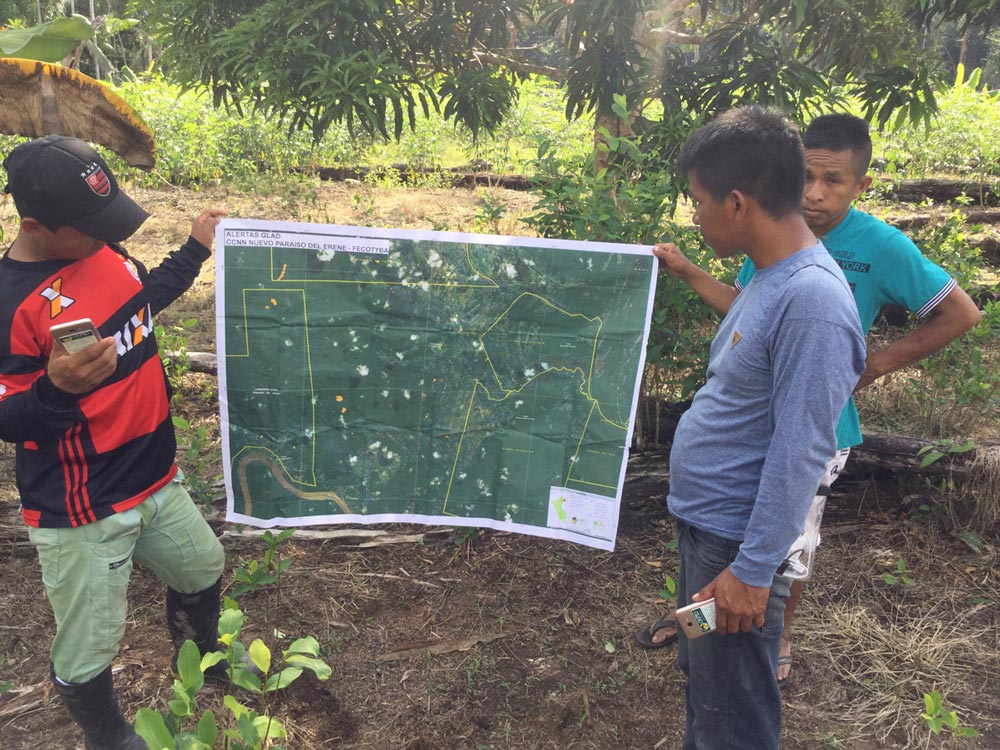A new reforestation initiative in the Amazon
Although most of the Buen Jardín community is covered by rainforest, there are pockets that have been cleared over the years. Our partner who operates the project, the Rainforest Foundation, is restoring the forest, starting with 70 hectares to be replanted this year


Although most of the Buen Jardín community is covered by rainforest, there are pockets that have been cleared over the years. Our partner who operates the project, the Rainforest Foundation US, is restoring the forest, starting with 70 hectares to be replanted this year. You can see patches of dead or cleared forest on the map above. Each orange square is a planned restoration site for this year.
Community members will plant trees with high quality wood like Mahogany and Cedar, as well as fruiting trees like Guava and Cacao, which grow fast, absorb carbon, restore the soil, and generate revenue from local markets.
This year, the community will plant over 7,000 trees across 72 hectares. Once they're planted, community members will make quarterly reports documenting tree growth (we can't wait to look through that data!).
Study: Community-based monitoring & technology reduces deforestation in the Amazon
On projectwren.com, we talk a lot about how satellite imagery and GPS is used to stop deforestation in Buen Jardín. But we also understand that the concept is novel and difficult to grasp. This is roughly how the system works:
- Computer vision models detect early warning sign of forest loss
- Local monitors are alerted, and they can investigate in person and use their smartphones to document any damage
- Authorities are alerted and can take necessary action

It makes sense: how could you reliably monitor large swathes of rainforest on foot? Satellite imagery and digital processing is a scalable solution. But at Wren, we think it's vital to have data to back up the methodology. This method has been tried in a similar community in Peru, and experienced a 100% reduction in deforestation, so we thought it might work again here.
Now, the Rainforest Foundation US is conducting a study across 76 communities that did or did not implement the "Information Into Action" program as it's called, and has preliminary results after 1 year. It's too early be certain, but the results show a slight decrease in deforestation in communities that implement the Information Into Action program.
Read the full study and the Rainforest Foundation US press release.

